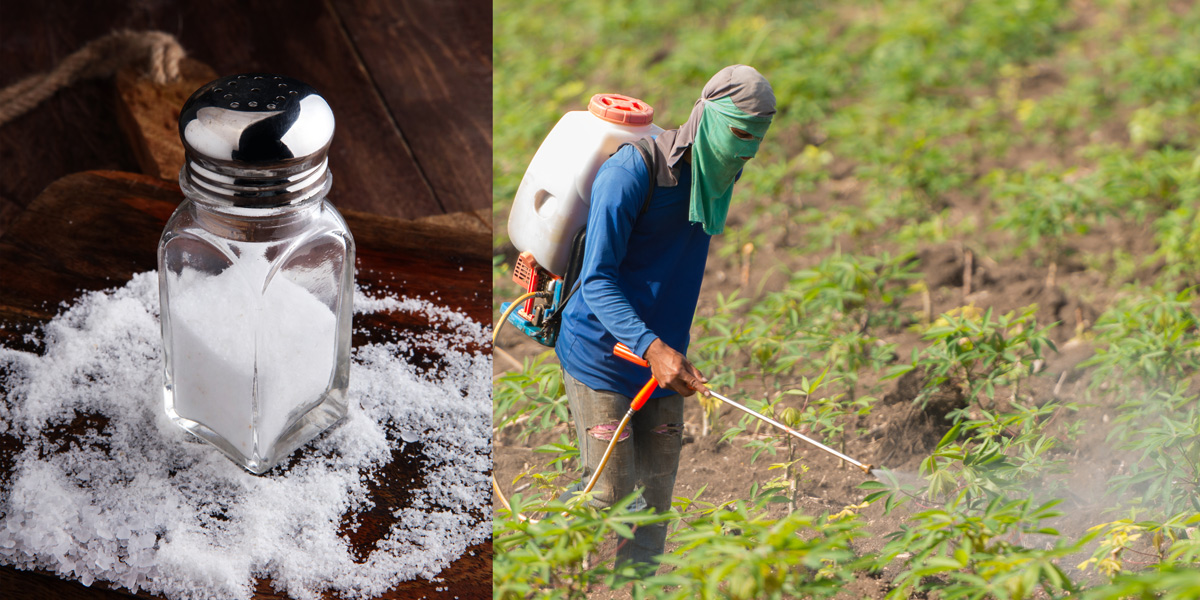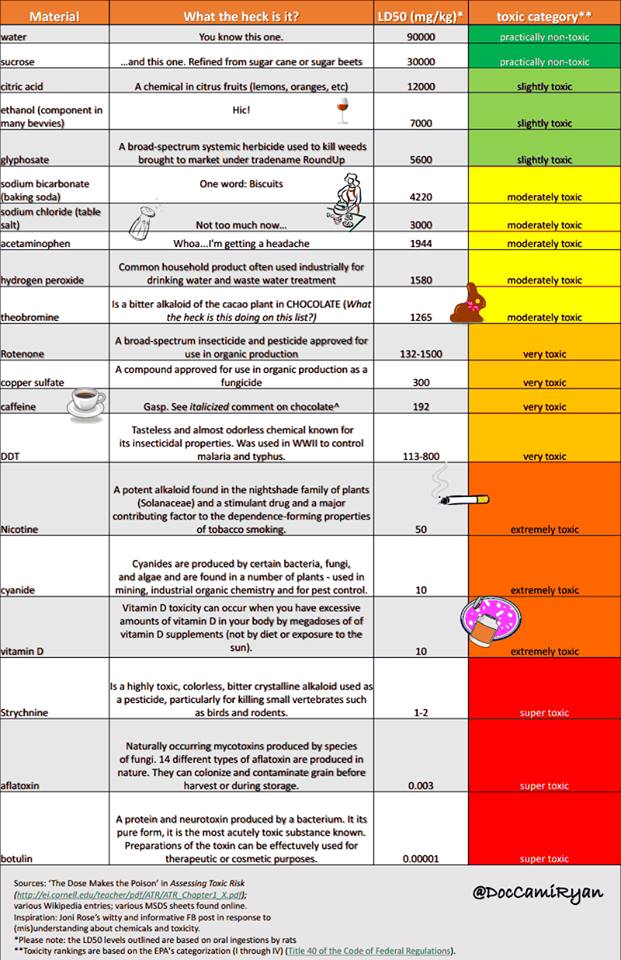
Scientists have hit back against a Monsanto-linked meme that aims to reassure us about the safety of the controversial weedkiller
Glyphosate, the key ingredient of Monsanto’s Roundup herbicide, is less toxic than caffeine and table salt. That’s according to an infographic ‘signed’ with the Twitter name of Monsanto social sciences lead Cami Ryan, which has been doing the rounds among glyphosate supporters on social media.

The infographic shows a variety of substances, including the chocolate ingredient theobromine (“moderately toxic”), vitamin D (“extremely toxic”) and the naturally occurring mould aflatoxin (“super toxic”), which are higher up on the toxicity scale than the “slightly toxic” glyphosate.
The Swedish ecotoxicologist Dr Thomas Backhaus has written a pair of blog articles that show the stupidity and dishonesty of such comparisons. He shows that in order to understand how toxic something is, you need to look at not just acute but also chronic toxicity.
Backhaus points out that:
1. Glyphosate is never used in its pure form – it’s always mixed with additives (adjuvants) that are toxic in their own right. So comparisons based on the pure chemical are meaningless.
2. The toxicity scale is based on the LD50 value of each substance – the concentration that kills half the organisms after short-term exposure to the compound in question. But the LD50 is about acute lethality. The concern with glyphosate herbicides is not how many people will keel over and die from a high short-term exposure (few) but how many will be affected by realistic low doses over a long-term period (potentially many). Particular concerns with glyphosate herbicides are developmental effects and cancer. Cancer does not arise from acute toxicity, but from long-term chronic toxicity. Cami Ryan’s infographic has nothing to say about these crucial endpoints.
That makes the use of a meme about acute toxicity as a way of trying to discredit the WHO’s cancer agency IARC over their evaluation of glyphosate as a probable carcinogen particularly ridiculous.
Pseudoscience
The LD50 argument was also taken up by the former Monsanto scientist Dr Alison Van Eenennaam in a blog post in which she rants against the pseudoscience used in parts of the GMO discussion.
Commenting on her post, Backhaus writes, “You cannot conclude that a compound has a ‘very low’ long-term toxicity by looking at the concentration that kills exposed animals after acute, short-term exposure. That’s basically like saying ‘Ok, you survived heavy smoking for a day. Great. Should you continue to smoke, I can therefore assure you, that you’re not getting cancer or any other chronic diseases even in 20 years time. And of course, your kids will also be fine.’
“Biology and toxicology simply don’t work that way. And it’s particularly painful to find such a gross mistake in a post that almost joyfully bashes pseudoscience (and rightfully so).”
Backhaus’s point also applies to those Roundup supporters like Kevin Folta who publicly drink Roundup in order to (in his words) “demonstrate harmlessness”. That’s like someone smoking a cigarette to demonstrate that smoking is harmless.
Ignorance or deception?
Dr Doug Gurian-Sherman is an agriculture science and policy consultant who formerly worked at the US EPA performing risk assessments of GM crops and microbes. He recently commented on the LD50 ruse employed by glyphosate defenders: “Risk assessment agencies like EPA, and toxicologists generally, do not define toxicity as only acute toxicity. They consider both acute and chronic toxicity. Typically, they base acceptable dietary exposure of the population on the lowest dose that causes any harm.
“For example, if a lower exposure causes chronic harm (e.g. kidney disease, cancer, or Parkinson's) than acute harm, the lower dose will be used to define the level that people can be exposed to through diet.
“On the other hand, acute toxicity can also be important, depending on the substance, for those who might be exposed to sufficient doses. Most herbicides have relatively low acute human toxicity, and often chronic toxicity is a lot more important.
“Both chronic and acute toxicity need to be taken into account. Those who talk only about acute toxicity either do not understand the subject or are being intentionally deceptive.”
Report: Claire Robinson










